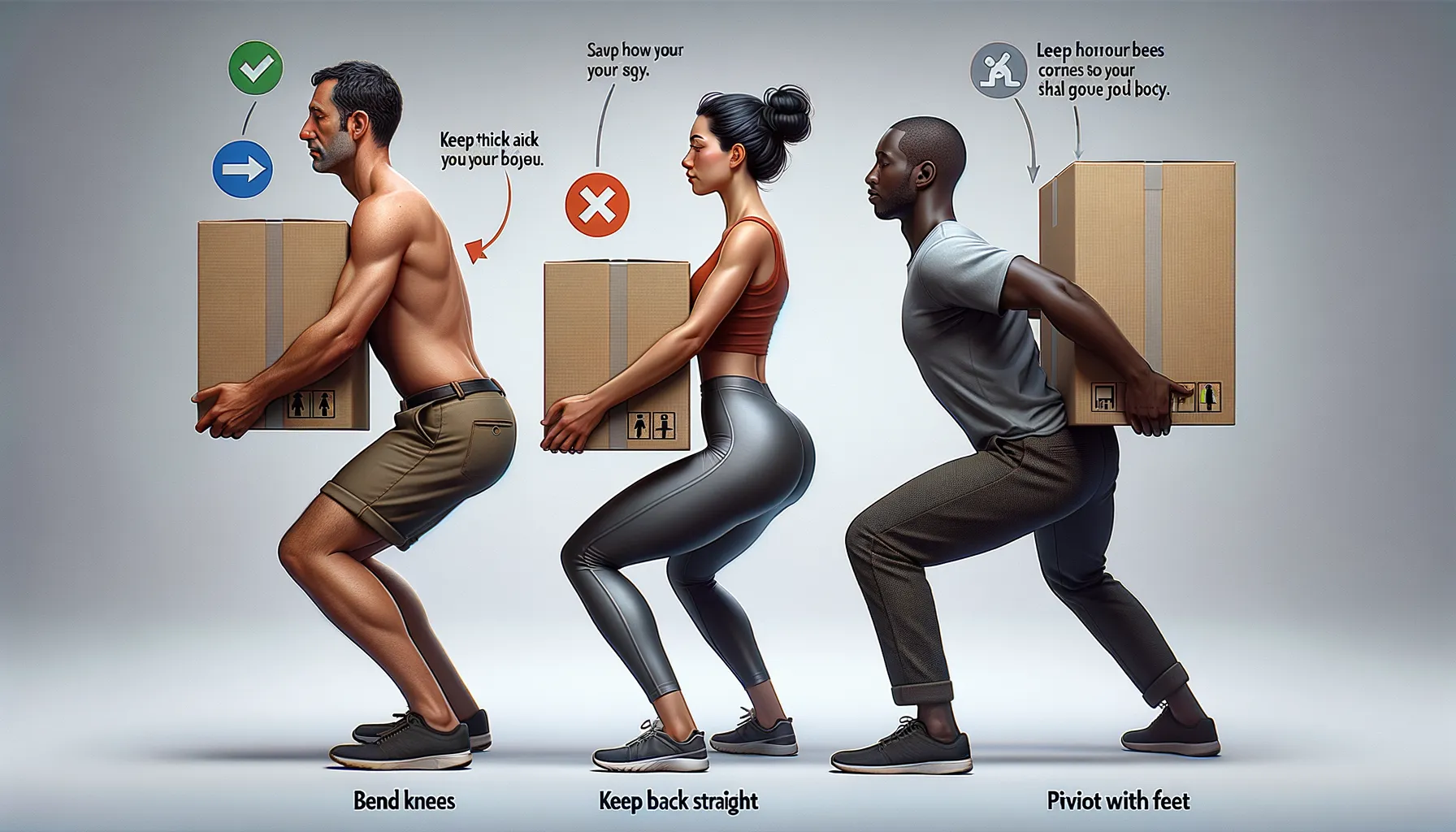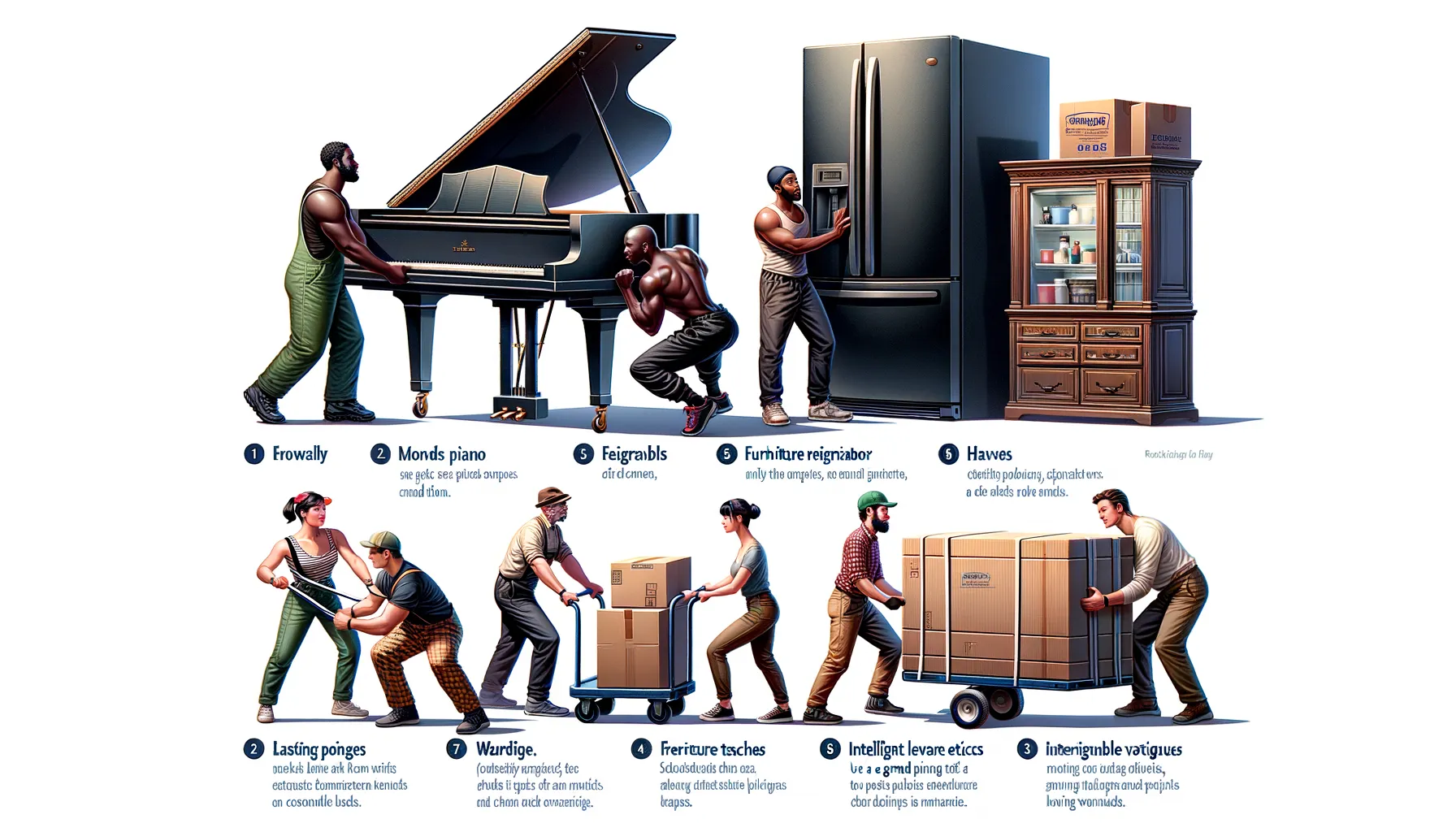Preparation Before Moving Heavy Items
Set the Stage for a Smooth Move
Moving heavy items isn’t just about brute strength—it’s all about strategy and preparation. Before you dig in, take a moment to ask yourself: “Am I really ready for this?” Rushing into it is like trying to sprint a marathon—you’ll only set yourself up for failure. Here’s how to gear up like a pro:
- Clear your path: Imagine tripping over a stray shoe while holding a bulky sofa. Disaster, right? Take a walk through your space and remove anything that could become an unwanted obstacle.
- Measure twice, attempt once: Measure both the item and your doorways, halls, or staircases. Trust me, there’s nothing worse than hauling something, only to find it doesn’t fit through the door.
- Phone a friend: Some jobs are too big for one person alone. Call in reinforcements—a trusted friend, neighbor, or even a professional mover if needed.
Gear Up Like a Moving Champ
Think of moving as a battle, and every battle requires the right armor. Equip yourself with gloves to protect your hands, lifting straps for support, or sliders to glide heavier items over floors. If you’re shifting something fragile—like Grandpa’s antique cabinet—have blankets or bubble wrap on standby to shield it from harm. It’s better to prep now than regret later!
Techniques for Lifting and Carrying Properly

Mastering Your Body’s Power
Imagine this: your body is your ultimate tool—no machinery compares to its agility and strength when used correctly. The secret lies in technique, not brute force. Before you even think about lifting that oversized couch or hefty box, position yourself close to the object. Feel its weight by rocking it slightly. Too heavy? Stop. There’s no shame in calling for help.
Now, for the magic formula:
- Bend at the knees, not your waist. Think of yourself as a well-oiled crane, using your legs to lower yourself instead of straining your back.
- Keep the item close to your body. Hug it like it’s a prize, pressing it against your core to reduce strain on your arms and spine.
Engage your core—your belly muscles are your stabilizers. Lift smoothly with your legs, not in jerky motions. And please, avoid twisting mid-lift. Picture yourself as a statue that pivots only with a purpose.
Tackling Challenging Shapes
Sometimes, the item seems determined to battle you—like an awkwardly shaped dresser or a large mirror. Solve this puzzle by adjusting your grip frequently. Pro tip: grab the bottom edge of tall items if possible and let gravity assist. When working with another person, communicate constantly. Don’t assume; state, “Step left!” or “Tilt forward!” Clarity avoids accidents.
Using Tools and Equipment to Assist

Make Heavy Lifting Feel Light with the Right Gear
When it comes to moving heavy items, relying on pure muscle isn’t just exhausting—it’s risky! That’s where tools and equipment swoop in like your personal superheroes, turning “impossible” into “totally doable.” Have you ever seen a dolly glide under a massive piece of furniture like magic? It’s not magic—it’s smart thinking.
Dollies and hand trucks are lifesavers for bulky items. For instance, sliding a fridge onto a dolly and effortlessly rolling it across the room feels oddly satisfying. But don’t stop there—straps and harnesses add serious leverage to your arsenal. They distribute weight evenly, making you feel like you’ve got superhuman strength without breaking a sweat.
- Furniture sliders: These nifty gadgets let you “sled” sofas or tables across floors without scratching a thing.
- Pry bars: Ideal for lifting heavy corners when you lack an extra set of hands.
The trick? Match the tool to the task. Trying to move a piano? Rental companies often have specialty tools. Tackling boxes stacked like a Jenga tower? A hand truck takes the chaos out of the climb. The right equipment doesn’t just lighten loads—it makes you look like a moving pro.
Tips for Moving Specific Types of Large Items

Handling Bulky Furniture Without Breaking a Sweat
Let’s face it – moving large furniture pieces like sofas or armoires can feel like playing Tetris in real life. The key? Strategy and some clever tricks!
Sofas and sectionals: Start by removing cushions and legs if possible. This minimizes weight and helps navigate tight corners. Pro tip: Wrap the entire piece in moving blankets to avoid scratches or tears when squeezing through doorframes. Furniture sliders under the base make even the heaviest couches glide like magic!
Armoires and dressers: Empty them out completely (yes, that means every drawer) to make them lighter. Secure doors with tape or ties so they don’t swing open during the move. Need to move it down stairs? Use a dolly with straps for safer maneuvering.
Tip! Never be afraid to flip these big pieces vertically—sometimes the tall-and-skinny approach works wonders for getting through stubborn doorways.
Tricky Items Like Pianos, Safes, and Appliances
Moving pianos can make your heart race faster than their melodies! For these giants of grace, enlist at least three helpers. Use a piano board with secure straps to distribute its weight and provide stability.
Safes aren’t just heavy—they’re awkward. Lay cardboard or plywood sheets along the path to protect floors, and always push—not pull—when moving.
As for appliances like fridges, remember to defrost them 24 hours ahead, and tape all loose parts in place. Want a bonus hack? Place towels or rags on the floor to avoid skid marks as you move heavy items.
Safety Precautions to Avoid Injuries

Plan Ahead to Protect Yourself
It’s easy to overlook safety when you’re focused on getting a massive couch through a narrow doorway. But here’s the truth: injuries can happen in the blink of an eye if you’re not careful. Before you even touch that heavy item, ask yourself: “Do I have what I need to stay safe?” A bit of preparation now can save you from soreness—or worse—later.
Here are a few *non-negotiables* to consider:
- Wear sturdy, closed-toe shoes with good grip—your toes will thank you!
- Gloves aren’t just for winter; they protect your hands from sharp edges.
- Use a back brace if you’ll be lifting repeatedly—it’s like giving your spine a supportive hug.
- Keep the area clear of clutter. Tripping over a stray shoe mid-move? Hard pass.
Listen to Your Body’s Warnings
Your body has a built-in alarm system—don’t ignore it. If you feel your back twinge or your arms start to shake halfway up the stairs, stop. Nobody’s winning a medal for pushing through pain. Use proper techniques and tools whenever possible. A dolly or furniture sliders might feel like cheating, but they’re lifesavers!
And remember, no hero moves! If something feels too heavy, *it is*. Call for help. Friends, family, even your friendly neighbor—they’d rather lend a hand than see you get hurt.